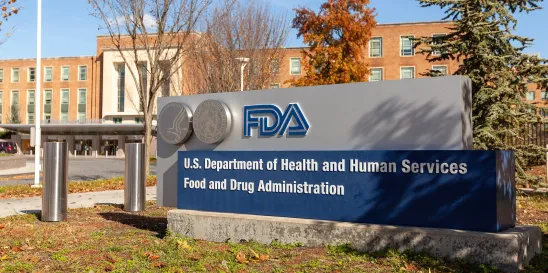The labeling of biosimilar products as “interchangeable” may be important in order to gain acceptance and use in the medical community. This article provides important information regarding revised FDA labeling guidance for biosimilars.
In September 2023, the Food and Drug Administration (FDA) proposed changes in the labeling requirements for biosimilars and interchangeable biosimilars in the draft guidance “Labeling for Biosimilar and Interchangeable Biosimilar Products: Guidance for Industry.” When finalized, these nonbinding recommendations will replace the 2018 FDA industry guidance and Questions Q.I.27 and Q.I.28 in the 2020 draft guidance “Biosimilarity and Interchangeability: Additional Draft Q&As on Biosimilar Development and the BPCI Act.”
Relevant Background and Definitions
Biological products (also referred to as biologics) are defined in the Public Health and Service Act (PHSA) as “a virus, therapeutic serum, toxin, antitoxin, vaccine, blood, blood component or derivative, allergenic product, protein, or analogous product…applicable to the prevention, treatment, or cure of a disease or condition of human beings.” Biological products are approved according to the processes outlined in §§ 351(a) and (k) of the PHSA. An applicant may obtain a license for reference products, biosimilars, and interchangeable biosimilars (“interchangeables”) under the licensing process.
Biosimilars are defined in the PHSA as having high similarity and no clinically meaningful differences in terms of safety, purity, and potency with respect to the reference biological product. Interchangeables are a subset of biosimilars, which have additional clinical data showing that the risk in terms of safety and efficacy of alternating or switching between the (interchangeable) biosimilar and the reference product is not greater than the risk of using the reference product without such alternation or switches. As set forth in the PHSA, an interchangeable “may be substituted for the reference product without the intervention of the health care provider who prescribed the reference product.”
When filing an application under § 351(k), the biosimilar or interchangeable applicant may rely on data submitted by the reference product sponsor. However, the applicant must also provide information demonstrating biosimilarity or interchangeability, including analytical and clinical studies.
As set forth in the 2023 Guidance discussion of FDA regulations, proper product labeling is imperative “to enable health care providers to use the drug safely and for the purposes for which it is intended.” (internal quotations omitted). Labeling requirements are outlined in 21 C.F.R. § 201.56 for both drugs and biological products; each label must include dozens of specific sections including indication and usage, dosage and administration, pediatric use, and clinical pharmacology.
Notable Changes Included in the 2023 Draft Guidance
While numerous changes were made to the guidance, four major changes are highlighted below:
1. Removal of the interchangeability statement
Under previous draft guidance, the FDA indicated that interchangeables should include an interchangeability statement on the label. In the September 2023 Federal Register Notice, the FDA explained that “[c]onsistent with [an] evolution in our thinking, the draft guidance states that both biosimilar and interchangeable biosimilar products should contain the same biosimilarity statement in the Highlights of the Prescribing Information.” This change therefore makes it incumbent on the prescriber or the public to consult the FDA’s Purple Book to determine if the product was licensed based on biosimilarity or interchangeability.
2. Product identification when the reference product label describes a non-U.S.-approved biologic
The September 2023 draft recommendations expand product identification for instances when the reference product labeling describes a clinical study conducted with a non-U.S.-approved biologic. The proposed guidance states that the biosimilar’s labeling should incorporate the same terminology regarding the study’s results as the reference product’s labeling. This was not part of the 2018 guidance.
3. Pediatric use statements
While licensure applications are required to include data from clinical studies, the studies that are relevant to pediatric use approval are typically conducted with the reference product, and not the biosimilar or interchangeable. Under § 351(k), biosimilar and interchangeable sponsors are not required to independently reestablish safety and effectiveness. The revised guidance clarifies that the biosimilar or interchangeable is to be labeled as safe, ineffective, or unsafe for pediatric use based on the determination made for the reference product. The biosimilar or interchangeable label would refer to the pediatric safety data for the reference product, restating and elaborating upon the information using the name of the biosimilar.
4. Incorporating relevant immunogenicity data from reference product
The FDA recommends that labeling for the biosimilar or interchangeable incorporate relevant immunogenicity information from the reference product’s labeling. Generally, the immunogenicity information from the reference product’s labeling should be included on the biosimilar’s or interchangeable’s labeling along with the disclaimer paragraph provided in the guidance document. However, if the reference product’s methodology for immunogenicity evaluation precluded an assessment of the incidence of anti-drug antibodies, the agency recommends that the biosimilar sponsor contact the relevant review division for further guidance.
Public Comments
The FDA is requesting public comments concerning the proposed changes [Docket No. FDA-2016-D-0643], especially for the removal of the interchangeability statement and the contents of the biosimilarity statement. Comments should be submitted to the FDA by November 17, 2023, to ensure receipt.






 />i
/>i

